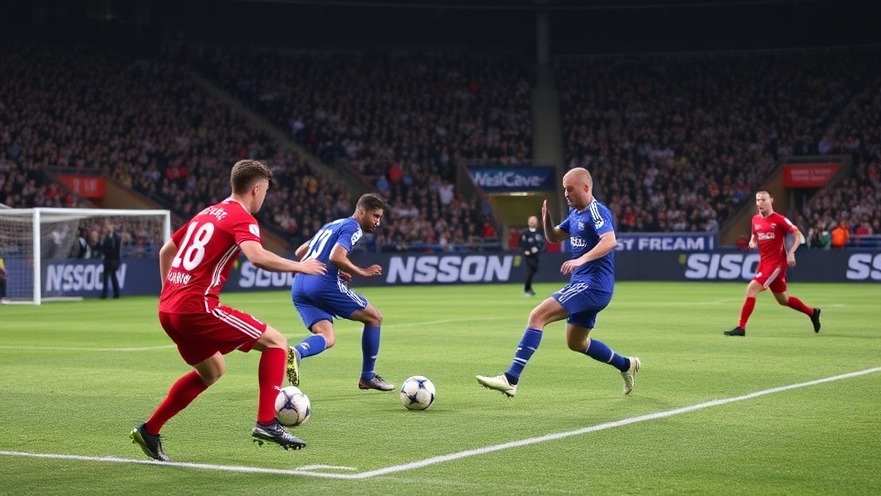
Soccer's Summer Dilemma: A Clash of Titans
The excitement of summer soccer is upon us, but that enthusiasm comes tinged with frustration due to overlapping schedules of two major tournaments. The annual Gold Cup, orchestrated by CONCACAF, runs from June 18 to July 6, 2025, holding its matches in multiple U.S. cities. At the same time, FIFA’s newly expanded Club World Cup will kick off, running from June 12 to July 13, showcasing the world’s best clubs and attracting global soccer stars like Lionel Messi, Kylian Mbappe, and Erling Haaland. This doubleheader could potentially water down the impact and significance of the Gold Cup, the longest-standing national team tournament in the region.
Understanding the Stakes: What Each Tournament Represents
The Gold Cup is a crucial revenue-generating event for CONCACAF, historically raking in over $100 million when held. It also signifies national pride for teams across North America, Central America, and the Caribbean. However, FIFA's decision to schedule these tournaments concurrently poses significant risks for the Gold Cup’s visibility and competitiveness. Top players from national teams often opt for the allure of club-level play over international fixtures, diluting the field's quality.
The Collateral Damage: Who’s Missing from the Gold Cup?
The repercussions are most acutely felt in the U.S. Men's National Team (USMNT), where player selection is heavily influenced by club commitments. As important preparations for the World Cup next year hinge on this summer’s performance, head coach Mauricio Pochettino faces the challenge of fielding a strong side without several key contributors. The collision of schedules not only complicates team preparations but also risks disappointing fans eager to witness star players on the national stage.
Contrast with Past Tournaments: A Shift in Balance?
Historically, the Gold Cup has thrived largely because it gathers talent from varied national teams, making for compelling views and match-ups. Previous tournaments, unencumbered by Major Club obligations, saw countries field competitive squads with their best players. This year, however, with clubs vying for international prestige and the associated financial incentives, national federations may struggle to assemble competitive units, leading to lopsided matches.
Fans Reactions: Passion Versus Pragmatism
Soccer fans are often torn when it comes to supporting club versus country, especially during overlapping tournaments. While die-hard supporters will rally behind their national teams, the glitz and glamour of club football can divert attention and loyalty. Fans face the dilemma of choosing between watching their country's games or seeing their favorite club players competing at the highest level. This may lead to dwindling attendance at Gold Cup matches, undermining the tournament's prestige.
A Financial Perspective: The Broader Economic Impact
The overlap poses potential financial repercussions for the economies of cities hosting Gold Cup games. Lower attendance could translate to decreased revenue from ticket sales, concessions, and local tourism—elements that are vital during a tournament that prides itself on community involvement and celebration of cultural diversity. For instance, cities in Texas, which traditionally host multiple matches, might see a dip in expected turnout, impacting local businesses reliant on foot traffic from soccer fans.
Looking Ahead: Possible Solutions and Adjustments
As we move forward, a dialogue may need to begin between FIFA and CONCACAF regarding future scheduling conflicts. Advocates of the Gold Cup might call for a reassessment of tournament timing to ensure that both competitions flourish without detracting from one another’s significance. Future adjustments could help balance the visibility of club football with the cultural and social importance of national team tournaments.
Conclusion: The Choice Is Yours
As summer soccer heats up, fans are left with a unique predicament—how to navigate overlapping competitions that influence everything from team selections to match attendance. The future of both tournaments lies in how stakeholders respond to this scheduling issue and whether they can coexist in a manner that benefits players, clubs, teams, and fans alike. So, as you gear up for the soccer action this summer, consider the implications of your viewing choices on the sport's evolving landscape.
 Add Element
Add Element  Add Row
Add Row 



 Add Row
Add Row  Add
Add 


Write A Comment